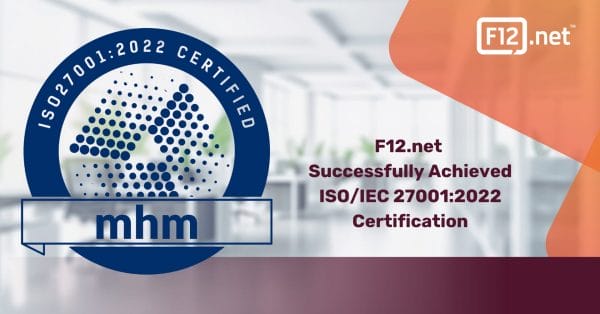In Michael’s final instalment of his Sell Your Business series, he takes important lessons learned in earlier posts and uses them as a foundation to recognize the right revenue when selling your business—a crucial step before hitting the bargaining table.
By: Michael Contento, F12 Managing Partner, Corporate Development & Business Innovation Executive
Part of the detailed and at times overwhelming process of selling your business involves prepping your numbers for due diligence. But that’s a big task: if you want your potential purchaser to say, “I’m in,” you’re going to need your accounts looking their best. In past articles, we’ve discussed streamlining your general ledger, as well as converting as much of your re-occurring revenue to recurring as possible—these are both important factors in polishing your business operations. A third element exists, as well, and it’s vital that you review it before beginning the negotiating process: translating your revenue into the right KPIs.
There are two types of revenue KPIs I want to discuss: your rate per user (RPU) and your revenue per employee.
Rate per user
Discovering your rate per user (RPU) means identifying the profitability that comes from each user of your product or service. In the MSP world, this translates to the number of people employed by your client who are using your devices, requiring IT support and cybersecurity. For example, if you have a recurring revenue contract for a 10-person company and you’re billing them $2,500 a month, then your RPU is $250.
Now, you may be wondering: how do I know if I have a healthy rate per user? At time of writing, the going market rate for RPU in the MSP industry should be around $140, although that varies with different service options. As someone aiming to sell their business one day, you want to be aiming for $140-160 per user minimum.
Revenue per employee
Your revenue per employee is a key performance indicator of what type of business you’re running. What do I mean by that? It goes back to a question I posed in an earlier post: are you really an MSP? Let me break it down here.
Revenue per employee is a company’s total revenue divided by the number of its employees. An MSP’s revenue per employee should be around $220-250K. A Value Added Reseller (VAR), however, might have a higher revenue per employee, because they’re selling more products than they are services, and products have a much lower margin.
If you’re running an MSP with a revenue per employee below $200K, that’s a key indicator that you may be either overstaffed or not billing the right rate per user.
Like I say with all my selling-your-business prep: crunch the numbers, identify the weak spot, and address it. By calculating your rate per user and your revenue per employee, you’ll have a much stronger picture of your company’s financial health — and you’ll know how to strengthen it before negotiating with buyers.
The right mindset
If you’re an entrepreneur, then from Day One you need to be in the mind frame of selling your business. Why? Because you should always be hitting these crucial KPIs. And this is because anyone looking to acquire your company is reviewing your KPIs for the last three years, not just the last twelve months.
An entrepreneur should never settle for the status quo. Instead, be constantly looking for those weak spots and figuring out how to strengthen your company’s financial baseline.
The truth about EBITDA
I need to wrap this series up with a hard truth: too many companies are damaging their EBITDA with so-called business expenses.
Okay, quick review: your EBITDA is your company’s earnings before interest, taxes, depreciation, and amortization. It’s a way to measure your company’s cash profitability based on your business operations.
So where are small businesses going wrong? They write off their tennis membership, their lunches, their vacations — things that are not really business expenses. And that diminishes their EBITDA. This is because operational expenses eat into a company’s profit, shrinking your EBITDA margin. When your EBITDA becomes too low (for an MSP it should be between 15-20%), that creates sticker shock for an investor or potential buyer.
Recognize the right revenue to sell your business: the takeaway
- Ensure your rate per user is at least $140 a month. This could mean increasing your service fees or offering more compelling service packages.
- Calculate your revenue per employee. Is it around $220K a year? If it’s lower than $220K, you may be overstaffed or not charging enough for your services.
- Don’t drain your EBITDA profit margin by writing off everything as a business expense. Take your money out of company dividends and make sure you have a healthy EBITDA when the buyer comes calling.
Do you want to learn more about becoming collectively extraordinary with F12? As the country’s fastest growing IT company, we’re always looking for smart, savvy, successful companies with whom we can join forces. Think that might be you and your business? Contact me today to talk business strategy, and see how we might become stronger together.



